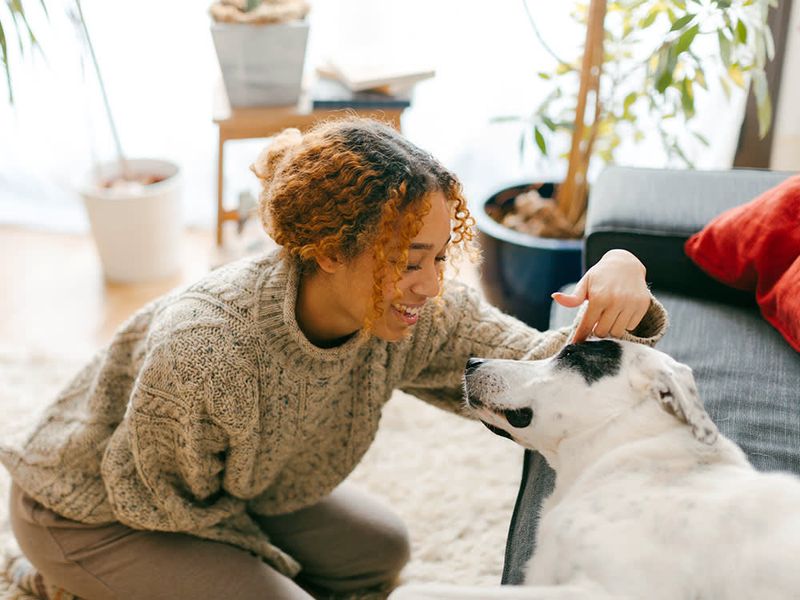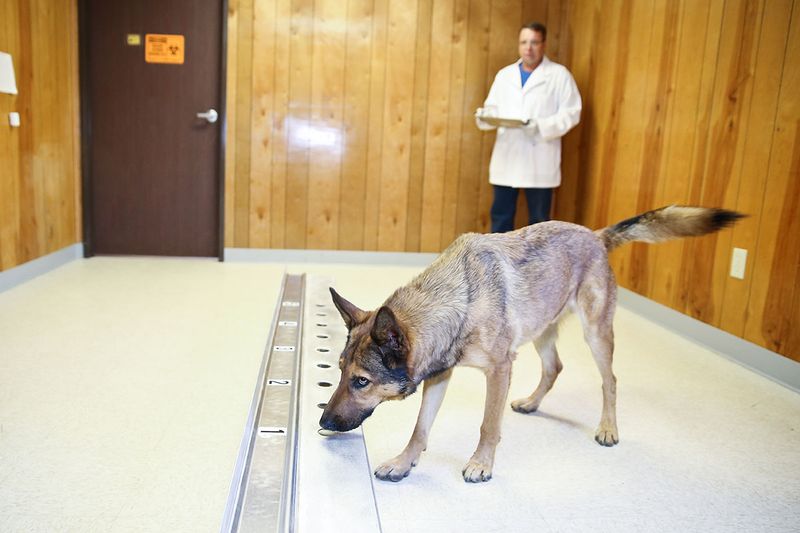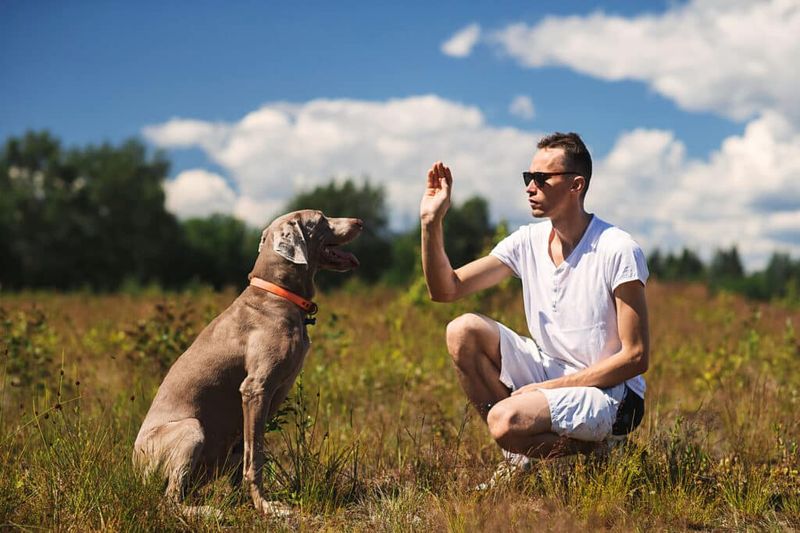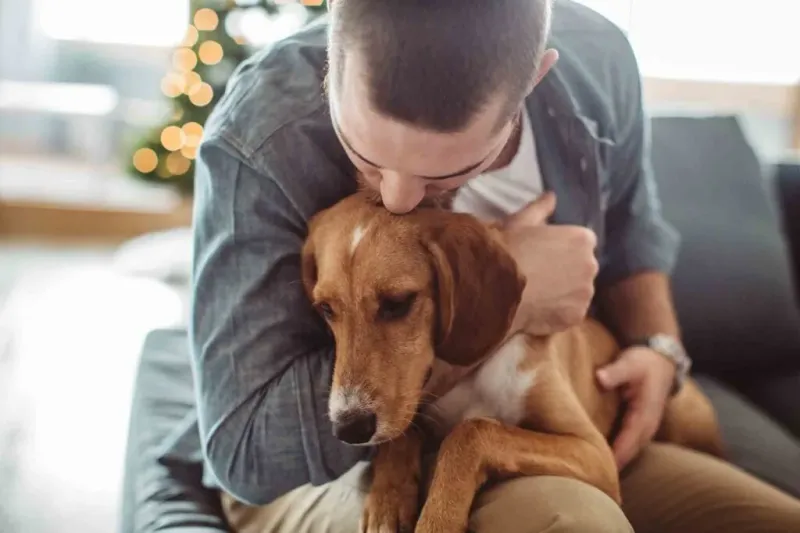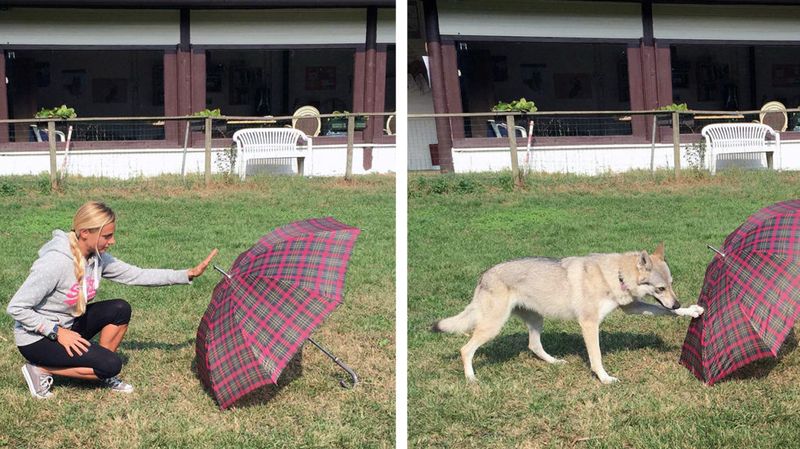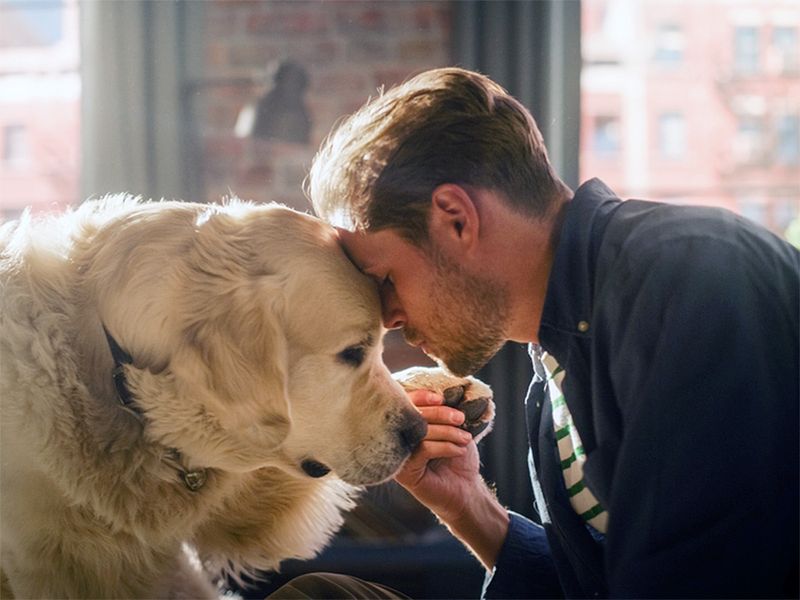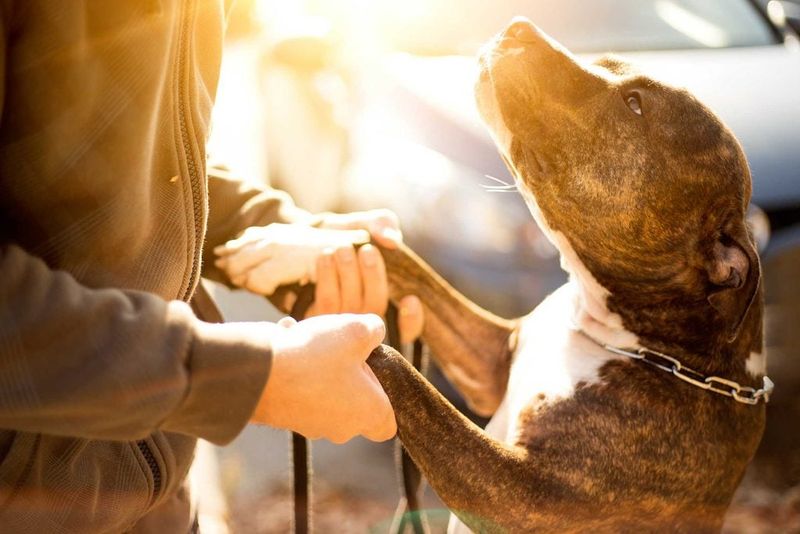Dogs are incredibly perceptive creatures, often picking up on subtle cues and signals from their human companions. These 22 tiny signals reveal just how attuned your dog is to your emotions, intentions, and habits, even when you’re unaware of them.
Tone of Voice
Did you know that your dog can understand the nuances in your tone of voice? When you’re angry, they might sense the tension in your voice and act cautiously. Conversely, a cheerful tone can make their tail wag with joy.
It’s fascinating how dogs have evolved to interpret human emotions through vocal cues, often responding appropriately to encouragement or scolding.
Imagine a world where our furry friends couldn’t distinguish between sarcasm and sincerity—thankfully, they’re adept at it! So next time you chat with your pup, remember they’re not just hearing words; they’re deciphering feelings and intentions.
Body Language
Dogs are masters of reading body language. When you cross your arms or lean back, they might perceive it as a sign of discomfort or detachment. This understanding stems from their pack instincts, where non-verbal cues are paramount.
Your posture can indicate whether you’re open to interaction or need space, and dogs respond accordingly. This silent communication between dogs and humans is a testament to our shared history and bond.
Think of your dog as an expert in human gestures, always ready to mirror your emotions and actions without requiring a single word.
Facial Expressions
Your dog is a connoisseur of facial expressions. They can distinguish between a smile and a frown, reacting to each with empathy or caution. Dogs often mimic their owner’s expressions, a phenomenon known as emotional contagion.
This ability allows them to be supportive companions, sensing when you need comfort or when it’s time for play. A raised eyebrow or a wide-eyed look from you can mean the world to your furry friend.
The next time you smile, watch your dog’s tail wag; they’re not just seeing you, but feeling your emotions too.
Breathing Patterns
Breathing isn’t just a life-sustaining act; for dogs, it’s a communication tool. Erratic breathing might alert your dog to stress, while calm, deep breaths can soothe them. Dogs have an acute sense of awareness when it comes to human breathing patterns.
This sensitivity is why some therapy dogs are trained to assist individuals with anxiety or panic disorders. They instinctively know when their presence is needed most.
Consider your dog a breathing companion, attuned to each inhale and exhale, ready to respond to your needs at any given moment.
Eye Contact
Eye contact can be a powerful form of communication for dogs. When a dog holds your gaze, it’s often a sign of trust and affection. This mutual understanding is akin to a silent conversation, reinforcing the bond between you.
However, prolonged eye contact can also be seen as a challenge, especially with unfamiliar dogs. Understanding the balance of when to hold or break eye contact is crucial in dog-human interaction.
Your dog’s eyes are windows to their soul, reflecting loyalty and love with every glance they share with you.
Yawning
Have you ever noticed your dog yawning right after you do? This isn’t just a coincidence; dogs often mimic human yawns as a sign of empathy and social bonding. It’s one of the many ways dogs reflect our behaviors, creating a shared experience.
This contagious yawning is more than mimicry; it signifies the deep connection and understanding between you and your dog. When they yawn with you, it’s their way of saying, “I get you.”
Such small gestures remind us of the unique emotional ties that bind us to our canine companions.
Footsteps
Your footsteps are not just sounds; for your dog, they are signals. Each step can convey your mood or intention, whether you’re rushing, pacing, or walking leisurely. Dogs associate specific footsteps with particular actions or emotions.
This auditory skill allows them to anticipate your arrival or departure, often waiting by the door when they hear familiar footsteps. It’s a testament to their acute hearing and emotional intelligence.
Next time you walk, remember your dog is not just hearing footsteps; they’re interpreting the rhythm and pace as part of their understanding of you.
Scent Changes
A dog’s nose is a marvel of nature, capable of detecting minute scent changes that humans can’t perceive. Whether it’s the smell of fear, happiness, or a new perfume, dogs are attuned to these olfactory cues.
This ability allows them to gauge your emotional state or identify unfamiliar elements in their environment. It’s why service dogs can alert to health changes, like insulin levels or impending seizures.
Think of every scent you carry as a story your dog reads with eager curiosity, piecing together the world around them through their incredible sense of smell.
Routine Awareness
Dogs are creatures of habit, thriving on routines and structure. They quickly learn the patterns of your daily life, knowing when you wake up, leave for work, or prepare meals. This awareness makes them excellent timekeepers and companions.
Their ability to predict your actions brings comfort and stability to their world. It’s this predictability that they rely on, anticipating your next move with uncanny accuracy.
Imagine your dog as your routine shadow, subtly guiding and adapting to your schedule without uttering a single bark.
Touch Sensitivity
Dogs have an acute sense of touch, often responding to the lightest caress or pat. This sensitivity allows them to gauge your mood and intentions, offering comfort or seeking affection in return.
A gentle scratch behind the ears or a soft belly rub can convey love and reassurance, strengthening the bond between you. It’s through touch that many dogs express their unwavering loyalty and devotion.
Consider how your simple touch can communicate a thousand words to your dog, building a connection that transcends the spoken language.
Posture Changes
A shift in your posture can speak volumes to your dog. Whether you slouch, stand tall, or shift your weight, they interpret these changes as messages about your mood or intentions.
Dogs learn to associate specific postures with actions, like preparing for a walk or settling in for a nap. This keen observation is part of their natural instinct to read their environment and respond accordingly.
Imagine your dog as a posture detective, piecing together clues from your movements to understand your state of mind and anticipated actions.
Hand Gestures
Hand gestures are a universal language that dogs have learned to interpret. Whether it’s a wave, point, or beckon, dogs respond to these cues with precision and understanding.
These gestures become tools of communication, teaching dogs commands or expressing emotions without words. Your dog’s ability to read your hand movements is a testament to their intelligence and adaptability.
Think of each gesture as a word in a silent dialogue between you and your furry friend, bridging the gap between species with grace and ease.
Vocal Stress
Dogs can detect stress in your voice, even when you try to hide it. They hear the strain, the pitch, and the tension, responding with empathy or concern.
This sensitivity makes them excellent emotional support animals, often providing comfort when their human is distressed. Their keen ears pick up on what words might not convey.
Imagine your dog as a vocal therapist, always ready to lend an ear, providing solace through their unwavering presence and understanding of your emotional state.
Mimicking Behavior
Dogs are adept at mirroring human behavior, a trait that strengthens their bond with us. Whether it’s copying a playful jump or a relaxed slouch, dogs often mirror the actions of those they love.
This behavior is more than imitation; it’s a form of social learning and connection. It shows the deep relationship and understanding shared between dogs and humans.
Consider your dog a reflection of your own energy, echoing your enthusiasm or calmness in their actions, making the partnership with them truly special.
Mood Detection
Dogs have an innate ability to detect human moods. They can sense when you’re feeling down, stressed, or joyful, often reacting with empathy or enthusiasm.
This emotional sensitivity makes them wonderful companions, offering support in times of need. Their intuitive nature allows them to assess the emotional atmosphere and respond with love and loyalty.
Think of your dog as an emotional barometer, always tuned in to your feelings, ready to provide comfort or share in your happiness without hesitation.
Energy Level
Dogs are experts at reading energy levels, often matching their actions to your pace. Whether you’re full of energy or feeling sluggish, they adjust their behavior to complement yours.
This adaptability is part of their charm, making them great companions for both active adventures and lazy days. Their ability to sync with your energy makes every interaction harmonious.
Consider your dog as your energetic mirror, reflecting your vitality with enthusiasm or calmness, and always ready to join in whatever mood you bring.
Sound Sensitivity
Dogs have a heightened sense of hearing, capable of detecting sounds that are imperceptible to humans. Sudden noises, like a door slam or a distant thunder, can cause them to react with alertness or anxiety.
Understanding these reactions is key to providing comfort and reassurance in noisy environments. Their sensitivity to sound is both a blessing and a challenge, offering protection while requiring understanding.
Think of your dog as your personal sound detector, always on the lookout for auditory cues that might escape your notice.
Paw Licking
Paw licking can be more than a grooming habit; it often signals stress or discomfort in dogs. Your dog might start licking their paws excessively when they sense changes in your mood or environment.
This behavior can be a sign of empathy or an attempt to self-soothe. Observing and understanding these actions can help address underlying concerns for your pet.
Consider paw licking as a window into your dog’s emotional state, offering clues about their comfort and well-being, often reflecting the atmosphere around them.
Proximity Preference
Dogs often choose their proximity to humans based on comfort and attachment. Your dog might prefer sitting near you when you’re calm or need space when you’re agitated.
This behavior showcases their understanding of social dynamics and their desire for companionship or solitude. It’s their way of showing love and respect for your personal space.
Think of your dog as your personal space negotiator, always gauging when to be close for comfort or when to give you the room you need.
Tail Wagging
A wagging tail is more than a sign of happiness; it’s a complex language of its own. The speed, height, and direction of the wag can convey various emotions, from excitement to caution.
Your dog uses tail wags to communicate not just with you but with other animals, signaling intentions and feelings. It’s a dynamic form of expression that requires careful observation to interpret accurately.
Imagine your dog’s tail as a flag of emotions, waving messages of joy, alertness, or readiness to connect with every wag.
Ear Positioning
Ear positioning in dogs is a subtle yet powerful indicator of their mood and focus. Perked ears can indicate alertness or curiosity, while laid-back ears might signal submission or relaxation.
By observing your dog’s ears, you can glean insights into their thoughts and feelings, enhancing your communication with them. It’s a silent language that speaks volumes about their state of mind.
Consider your dog’s ears as emotional antennas, always tuned to the signals of their environment and responding with precision to the world around them.
Leash Awareness
The sight of a leash can send a wave of excitement through your dog. It signals the promise of adventure and exploration, a cue they associate with walks and outdoor play.
This awareness shows their anticipation and eagerness, often expressed through wagging tails and joyful barks. Their understanding of the leash represents their love for routine and activity.
Imagine your dog as a ready explorer, always on the lookout for the next opportunity to venture out with you, leash in mouth, excitement in their eyes.

